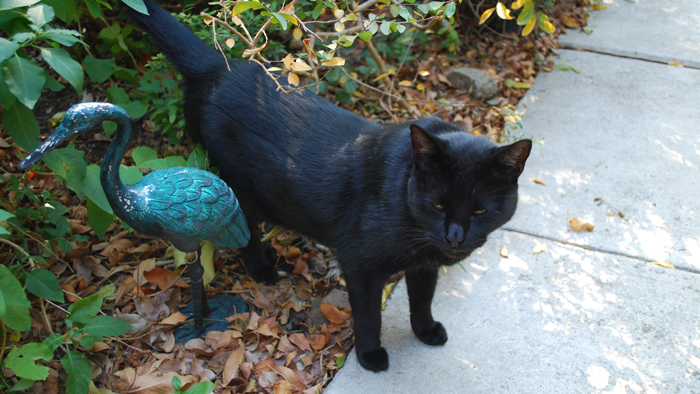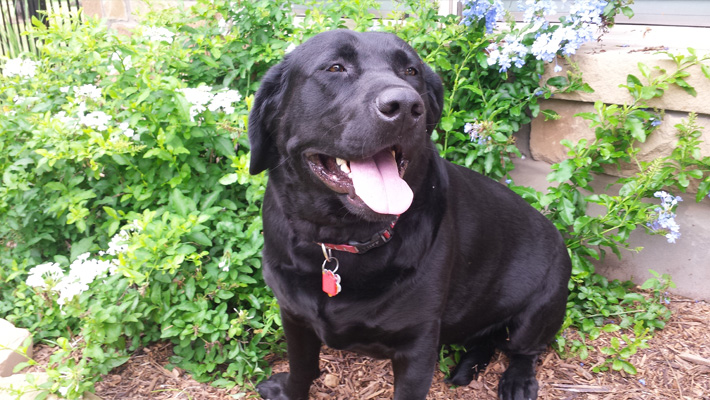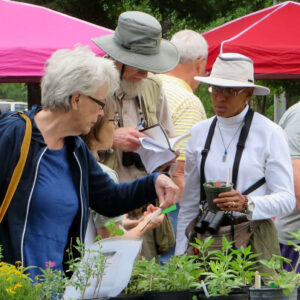There are lots of plants with some degree of toxicity to pets, but most are not a threat except in extreme cases of allergy or unusual consumption.
By Calvin Finch, Ph.D.
If your experience with pets and plants has been like mine, it’s easy to draw the conclusion that there is a minimal threat from toxic plants. In 60 years of raising multiple dogs with free range in heavily planted landscapes, I have never experienced a problem caused by toxic plants.
Based on other evidence, however, the issue of the threat of toxic plants to pets is real and of great interest to many pet owners. Part of that evidence was a report I received that a “friend of a friend” lost a beloved pet to poisoning from sago palm seeds.
The webmaster of plantanswers.com where my gardening articles are archived reports that the topic “Toxic Plants” is consistently in the top ten of subject searches on the popular website.
San Antonio veterinarian Dr. Lewis Radicke confirms that the threat from toxic plants is real. The numbers of incidents caused by toxic plants is not nearly as high as problems caused by other types of accidents or diseases.

Among the list of plants in the San Antonio area that seem the most likely to cause problems are sago palm seed, castor bean seed, lantana foliage and berries, oleander stems and blooms, mushrooms and mistletoe stems and berries.
Consider removing — or at least reducing — the threat of individual plants that cause the most poisonings in the San Antonio area.
- Castor beans: Remove them from areas where pets have access. The plants will naturalize and the seeds are a long term threat.
- Sago palm: Seed production is rare. The round shape and smooth soft skin of the seeds, makes the seeds a threat to pets that like to play with balls. Cut out the reproductive growth and/or remove the seeds before they mature.
- Lantana: If dogs or other pets show any inclination to consume the leaves as they do with grass or hackberry leaves to serve as a stomach purge. It may be best to remove the plants. Based on the large number of lantanas in area landscapes and small number of poisonings, it is an unusual occurrence.
- Mushrooms: Most of the time pets pass up mushrooms, but the safest strategy may be to keep your eyes open for mushroom “bloom” and quickly remove it with a shovel. Most mushrooms sprout in the spring or summer after wet weather.
- Mistletoe: Place stems and berries that fall off of trees in the garbage. A walk by trees with the plants after windy and rainy days will usually do the job. It is ironic that the “poisonous” mistletoe berries are a favorite bird food.
- Oleander: Only use them in parts of the landscape that aren’t frequented by dogs who have shown an inclination to chew stiff stems or sticks. This is especially a concern post-freeze.
- Paperwhite and daffodil bulbs: The bulbs are a threat if your pets chew such materials in packages or fresh plantings. Keep the packages out of pets reach and cover the new planting with mulch or wire to discourage digging them up. Dr. Radicke does not believe the species are common enough in area landscapes to be a poisoning threat.
- Texas mountain laurel: The seeds are poisonous and common, but they’re also small and hard-shelled, not a favorite size or texture. Dr. Radicke reports that the seeds usually pass through the digestive system in tact with no noticeable impact on the pet.
There are lots of plants that have some degree of toxicity to pets, but most are not a threat except in extreme cases of allergy or unusual consumption. Most pets avoid plants with toxicity because of smell, taste or texture.

However, some shapes can be attractive to pets and raise the likelihood of consumption as a problem. The round, smooth shape of sago palm seeds is an example. Berries are attractive to some pets and some pets will chew sticks without discriminating between toxic and non-toxic sticks.
To Help Prevent Poisoning from Toxic Plants:
- Research the internet or confer with your vet about what symptoms may appear and what is the recommended first aid treatment if you have any of the most dangerous plants in your landscape. Keep the info in a place where you can find it quickly. Make a point to review the information if you obtain a new pet.
- Make chewing plant material one of your targets in obedience training. Encourage pets to chew toys or only sticks you select.
- Puppies and kittens are most vulnerable, so do your best to watch them when they operate in a new landscape or around toxic plants. To reassure yourself with a pet that seems attracted to a particular plant, search for the plant on the internet to determine its toxicity. If the plant is identified as a problem, take one or more of the action steps above.
And if the worst happens and your pet consumes a poisonous plant, contact your vet or the Poison Control Hotline at 855-213-6680 for treatment instructions prior to any treatment. Identify the plant suspected of causing the symptoms and be prepared to clearly describe the symptoms.


